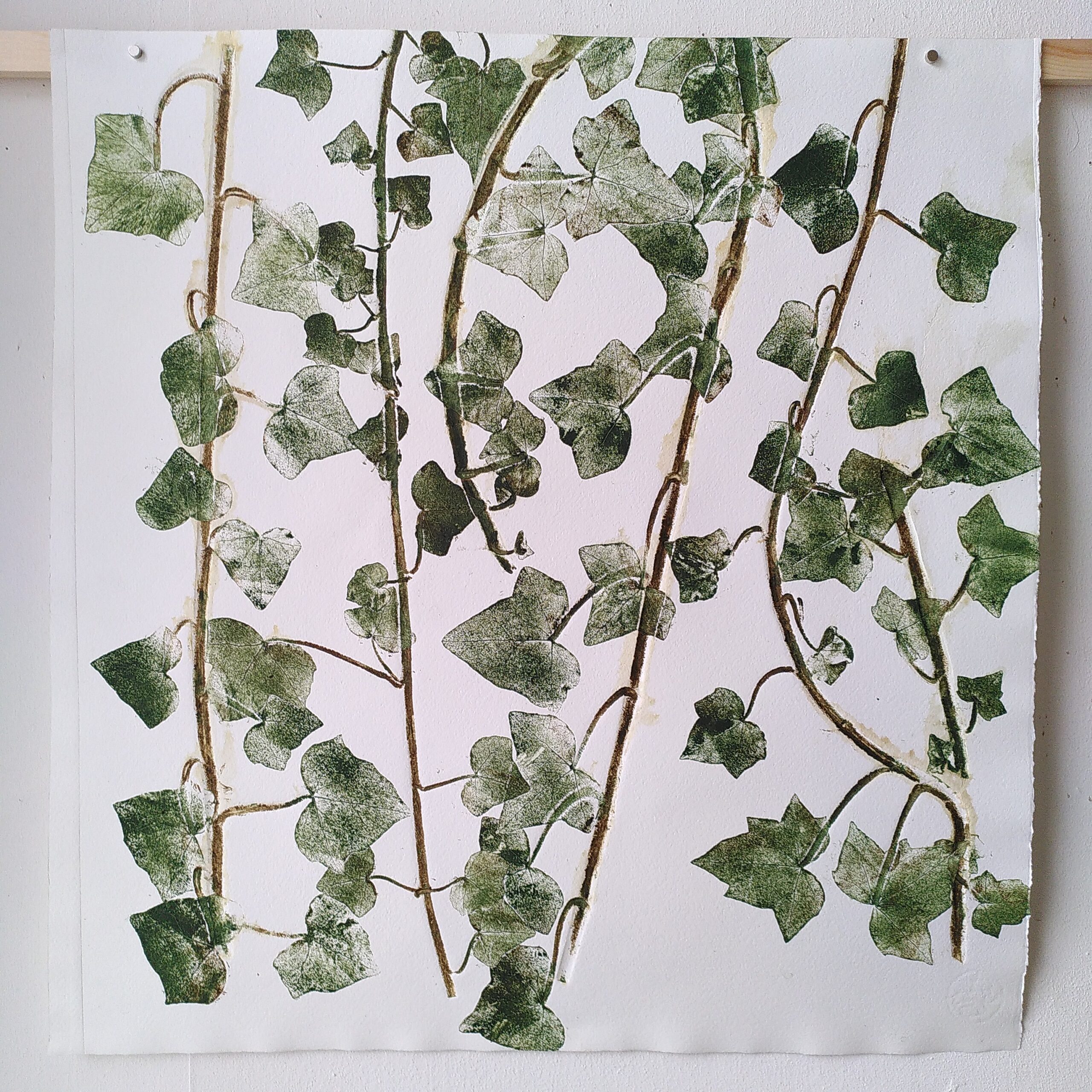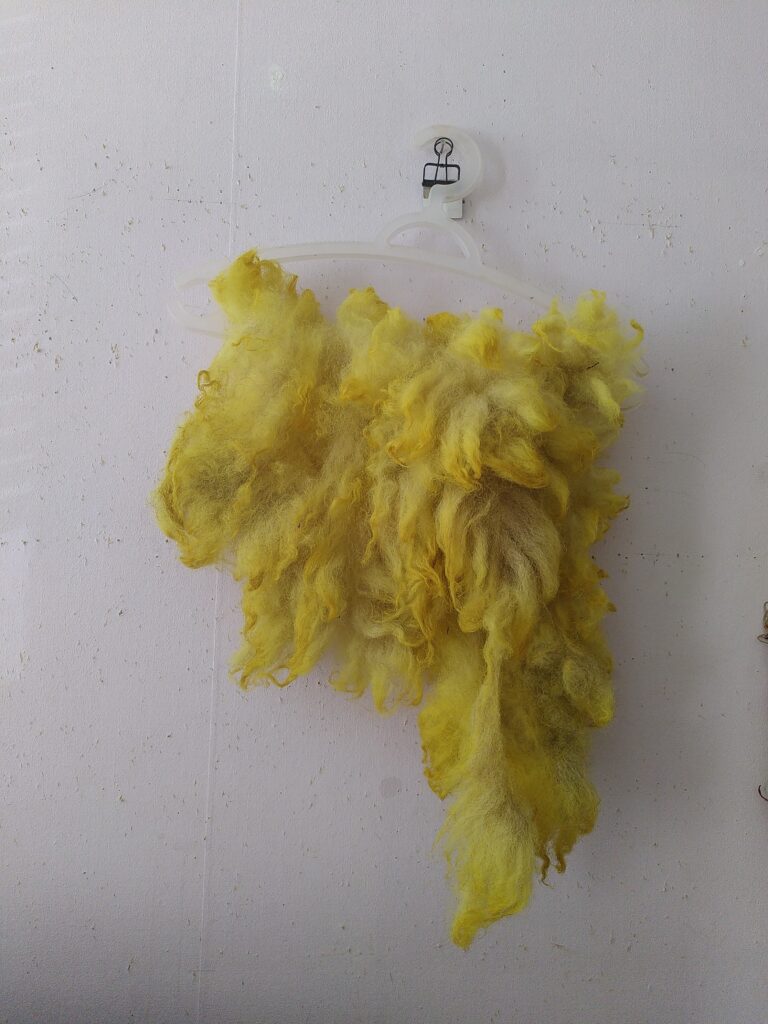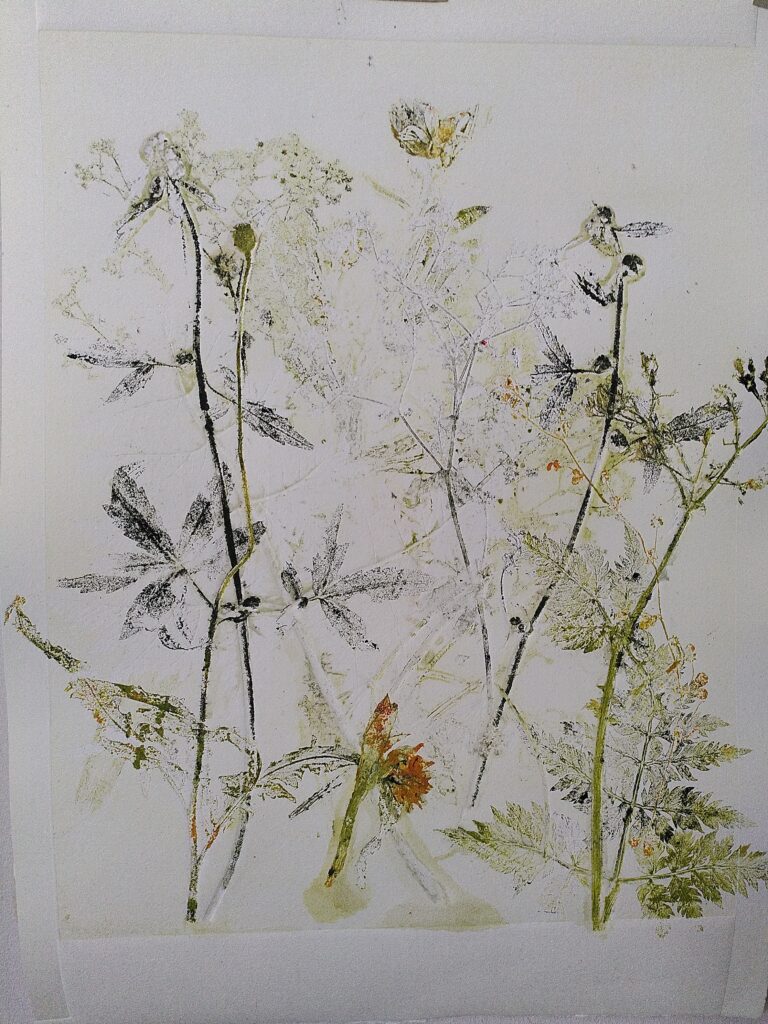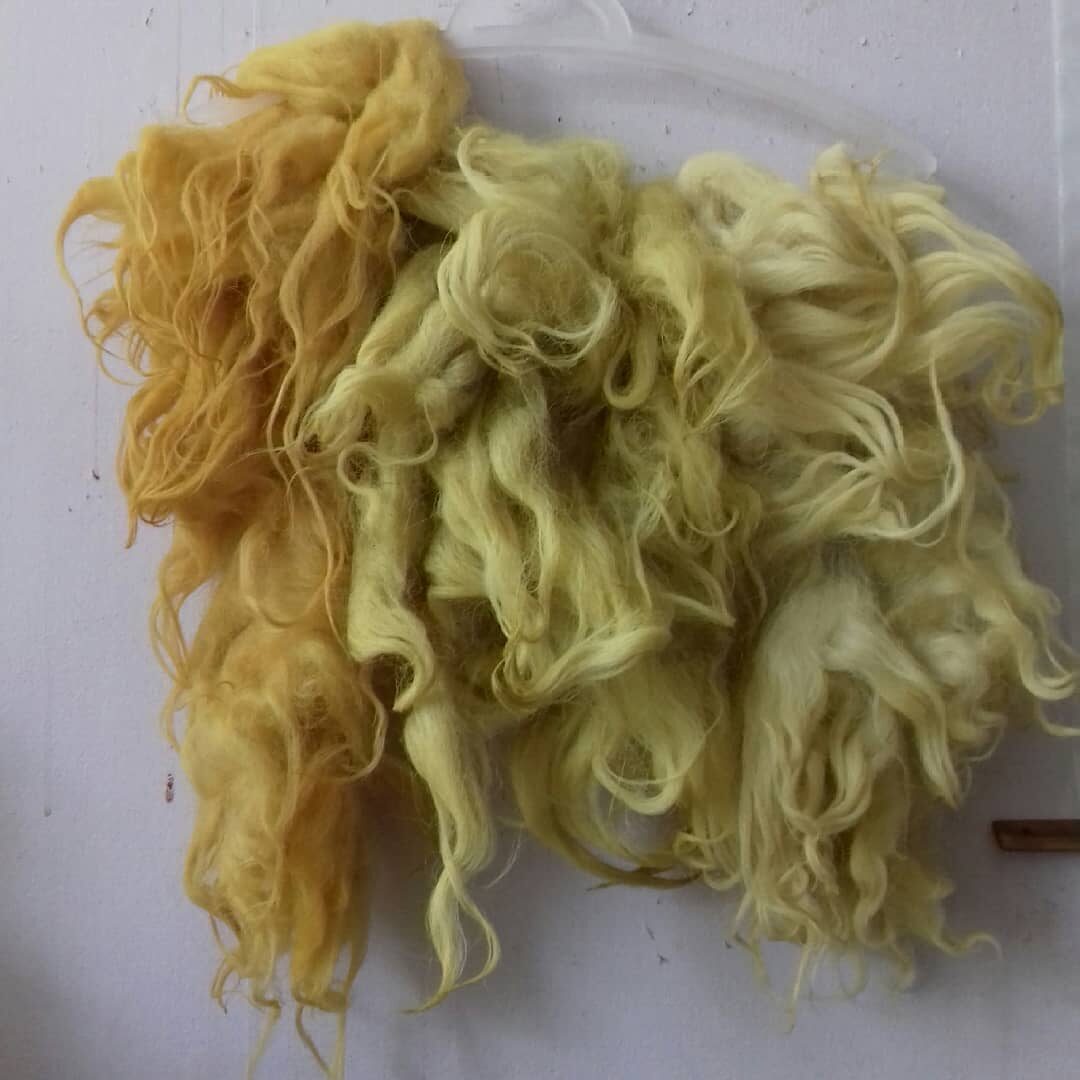
I like to dye with plants as they appear in the season. To dye with fresh plants you need some knowledge of plants.
I got a start with this when I was helped to create a natural garden behind my house thirty years ago. There was a small spot where there was nothing more to see than sand and rubble after a renovation. I laid down some paving stones so I could sit and the rest of the idea was: don’t do anything with the soil, plants can grow anywhere. Sowing was done and cuttings were planted. I have had surprisingly few annoying plants in the garden. Poor soil is good for a wide variety of species. Gradually the garden, which is mainly shaded by high walls, has become a small green oasis between buildings. Some young small trees have been planted that filter the shade and the soil has changed because of the leafs that fall in autumn. In spring it is a feast of flowers and later in the year there is a more than welcome shade between buildings. In autumn the leafs change colour, amazing how it has become a garden..
I learned from wild plant species, what an enormous wealth that is. Fast forward about 20 years, I saw how you can dye with plant material. I could recognize plants and I now learned more about them, namely applications. That was interesting! A reason to deepen my knowledge: where does something grow, when does something bloom, when is it good to harvest, how do you make sure that it does not damage the habitat. Just as I picked a bouquet of daisies as a child, I could pick flowers again. Nature is generous and you can use it with caution. Think of picking blackberries or elderflowers. You’re allowed to make mistakes too! Otherwise you won’t learn.
For the last years I share an allotment garden, where in addition to edible plants and host plants (for insects), dye plants and weaving plants are growing. It makes it easier to harvest and to use rarer plants.


Wool and natural colors
Wool is a raw material that was highly valued in the past. Wool from Dutch sheep is generally coarse and less suitable for soft clothing, but it has many beautiful properties. In general wool takes up natural dye really well. With the right dyeing methods colors can be retained for many years. I think it’s great that attention is being paid again to natural dyeing and the colours that are essentially different. They exist of what is present in nature around you.
I won´t say it is completely harmless. It depends on the methods used. You use water and energy anyway. But you also breath. Less poison is released into nature and you yourself form a link in all kinds of processes. That’s really fun and great actually
It’s hard to imagine what the world used to look like in the past. Very different colors and scents anyway, not always better! Intense colors were something that only rich or important people were allowed and could afford to have. I have heard more often is that you see differently when you experience natural colors. They are softer and harmonious.
Today we are used to bright colors, fast images and sounds, but perhaps these stimuli cause unrest and maybe indifference in the end. Just as greenery and trees prove that they make people feel better, you could hopefully achieve something similar with these shapes and colors from nature. If you want to see!
Plants again
Plants are all different in appearance and they contain invisible things: smell, tast, dye, fibers, meaning. That diversity prompted me to print the plants around me. To show that they are there and should not be overlooked. The green mass of a roadside for example can hide enormous diversity, hopefully encouraged by humans. They are a buffer for dust, insects, your mood. I hope more people will enjoy it.

